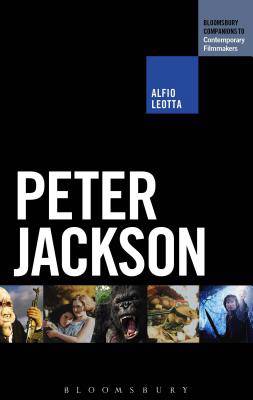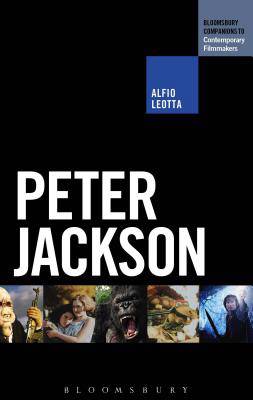
Je cadeautjes zeker op tijd in huis hebben voor de feestdagen? Kom langs in onze winkels en vind het perfecte geschenk!
- Afhalen na 1 uur in een winkel met voorraad
- Gratis thuislevering in België vanaf € 30
- Ruim aanbod met 7 miljoen producten
Je cadeautjes zeker op tijd in huis hebben voor de feestdagen? Kom langs in onze winkels en vind het perfecte geschenk!
- Afhalen na 1 uur in een winkel met voorraad
- Gratis thuislevering in België vanaf € 30
- Ruim aanbod met 7 miljoen producten
Zoeken
€ 390,45
+ 780 punten
Uitvoering
Omschrijving
Peter Jackson is one of the most acclaimed and influential contemporary film-makers. This is the first book to combine the examination of Jackson's career with an in-depth critical analysis of his films, thus providing readers with the most comprehensive study of the New Zealand film-maker's body of work. The first section of the book concentrates on Jackson's biography, surveying the evolution of his career from the director of cult slapstick movies such as Meet the Feebles (1989) and Braindead (1992) to an entrepreneur responsible for the foundation of companies such as Wingnut Films and Weta Workshop, and finally to producer and director of mega blockbuster projects such as The Lord of the Rings (2001-2003) and The Hobbit (2012-2013).
The book further examines Jackson's work at the level of production, reception and textuality, along with key collaborative relationships and significant themes associated with Jackson's films. The examination of Peter Jackson's work and career ties into significant academic debates, including the relationship between national cinema and global Hollywood; the global dispersal of film production; the relationship between film authorship and industrial modes of production; the impact of the creative industries on the construction of national identity; and new developments in film technology..
The book further examines Jackson's work at the level of production, reception and textuality, along with key collaborative relationships and significant themes associated with Jackson's films. The examination of Peter Jackson's work and career ties into significant academic debates, including the relationship between national cinema and global Hollywood; the global dispersal of film production; the relationship between film authorship and industrial modes of production; the impact of the creative industries on the construction of national identity; and new developments in film technology..
Specificaties
Betrokkenen
- Auteur(s):
- Uitgeverij:
Inhoud
- Aantal bladzijden:
- 304
- Taal:
- Engels
- Reeks:
Eigenschappen
- Productcode (EAN):
- 9781623566531
- Verschijningsdatum:
- 17/12/2015
- Uitvoering:
- Hardcover
- Formaat:
- Genaaid
- Afmetingen:
- 140 mm x 216 mm
- Gewicht:
- 498 g

Alleen bij Standaard Boekhandel
+ 780 punten op je klantenkaart van Standaard Boekhandel
Beoordelingen
We publiceren alleen reviews die voldoen aan de voorwaarden voor reviews. Bekijk onze voorwaarden voor reviews.









